Rash guards – or rashies, or rash vests – are a popular choice for those diving in tropical waters. They have their origins in surfing. Surfers began to wear T-shirt-like skins in order to protect themselves against the friction brought about by the salt, sand and board. Since then, rash guards have become a favourite among many people across all watersports. For divers, rashguards present two possibilities. They can be worn alone when diving in tropical waters, or they can be worn underneath a wetsuit in order to increase insulation and reduce water ingress (if constructed with a built-in hood). With the help of our product recommendations and buyers advice guide, you should be well on your way to deciding which is the best rash guard for you.
Best Rash Guards Reviewed
#1 – LAFROI UPF 50+ Compression Rash Guard
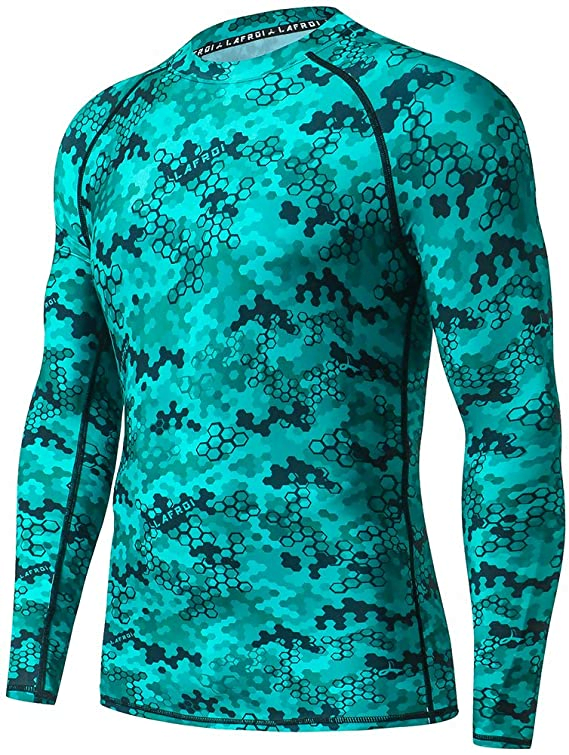
The LAFROI Compression Rash Guard is one of the best rash guards available on the market. Constructed from nylon and spandex, this makes for a fast drying and super-flexible rash guard. It is also UPF 50+ rated and has excellent moisture wicking capabilities, which is especially useful for those wishing to use it for other activities as well as diving.
Features
- 80% Nylon, 20% Spandex.
- UPF 50+
- Fast drying capability.
- Flatlock stitching for maximum comfort.
- Moisture wicking.
#2 – Daci Long Sleeve Women’s One Piece Swimsuit UPF 50
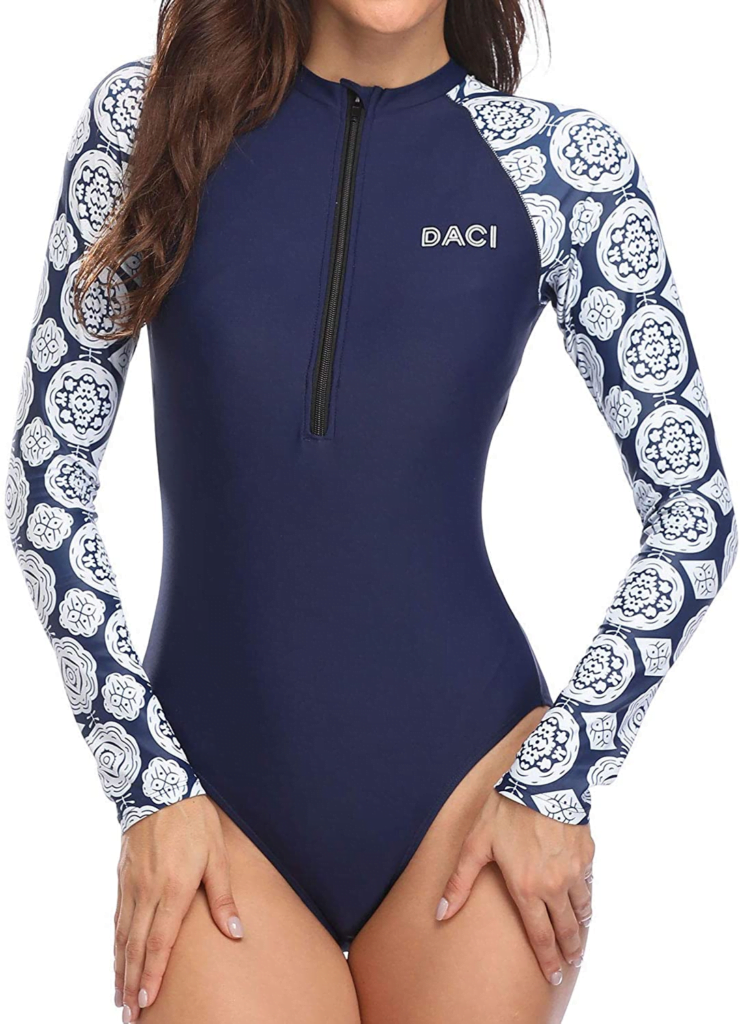
The Daci Long Sleeve Women’s One Piece Swimsuit is perfect for those who want stylish exposure protection. The swimsuit comes in a wide variety of colours and patterns, all of which are UPF 50+ rated. The swimsuit also has a built-in bra and is perfect for all watersports, from diving and SUP all the way to kiteboarding and surfing. It also looks great out of the water, and is perfect for yoga or any other similar activities.
Features
- Front zipper for easier donning and doffing.
- UPF 50+
- Available in a range of styles and colours.
- Suitable for all water-based activities including diving, swimming, kiteboarding, surfing and SUP.
- Built in bra.
#3 – Cressi Adult Camouflage Hooded Rash Guard
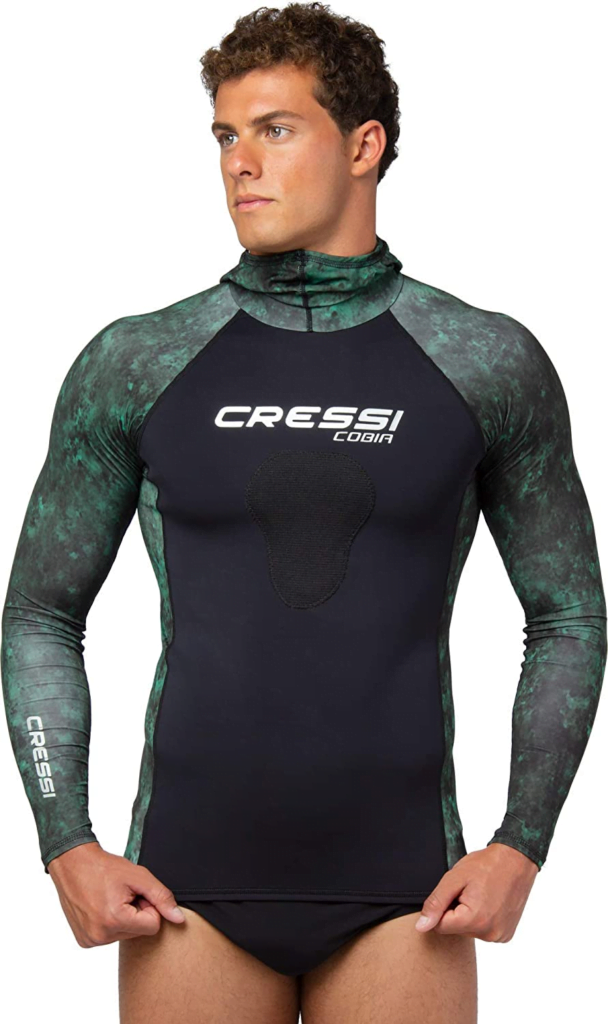
Cressi’s Hooded Camouflage Rash Guard is a great option for those looking for a little more insulation. The chest area is made of 1mm neoprene, providing increased warmth for the diver. It also comes with an attached hood, thereby increasing insulation as well as minimising water ingress. The rash guard comes in Cressi’s distinctive mimetic patterns, allowing the diver to blend in with the underwater environment, and get closer to marine life.
Features
- Chest area is composed of 1mm neoprene for increased insulation.
- Vest comes with a built in hood for increased insulation and protection.
- Perfect for under a wetsuit as well as on its own.
- Comes in green or blue camouflage.
#4 – O’Neill Women’s Hybrid UPF 50+ Long Sleeve Rash Guard
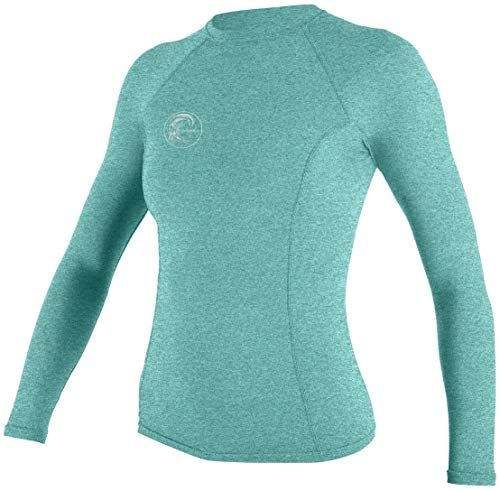
O’Neill’s Women’s Hybrid UPF 50+ Long Sleeve Rash Guard offers the diver a very comfortable experience. Made of 5oz Heathered HyperDry Fabric, this rash guard dries three times faster than your average rash guard. This makes it perfect for those who will be conducting repetitive dives, or equally for those who will be engaging in water sports. It is also tight-fitting making it ideal for both the diver and the athlete. On top of this, it is UPF 50+ rated and is recommended by the Skin Cancer Foundation for its protective qualities.
Features
- Skin Cancer Foundation recommended product: UPF 50+
- 5oz Heathered HyperDry fabric has a soft cotton-like feel but dries 3 times quicker.
- Performance Fit: Form-fitting tight layers fits like a second skin.
- Available in a range of colours.
#5 – AXESEA Women’s Long Sleeve Rash Guard
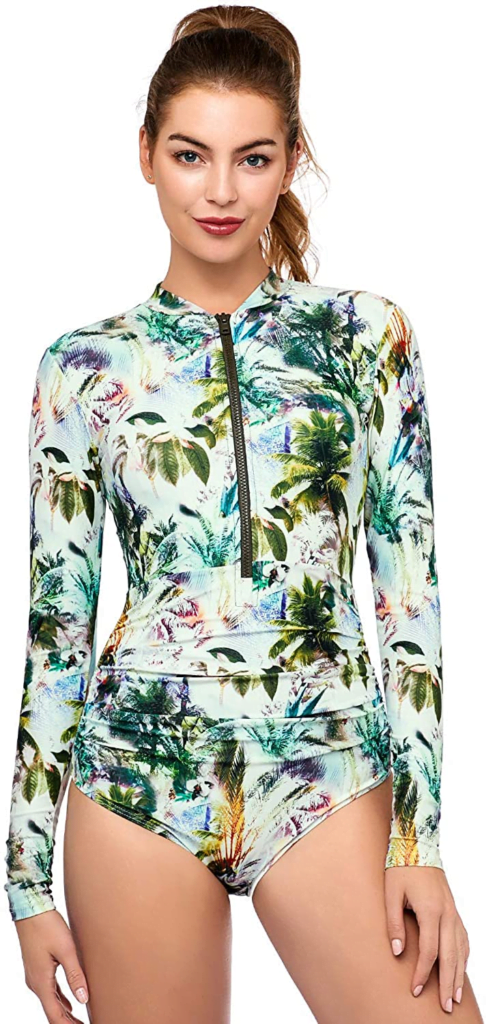
The AXESEA Women’s Long Sleeve Rash Guard is another great option for divers. Apart from being UPF 50+ rated, it is also very breathable and flexible. It has a ruched pattern in the stomach area which is very flattering for the diver when out of the water. The front zipper allows for easy donning and doffing, as well as additional temperature control. It is available in a range of patterns and colours.
Features
- UPF 50+
- Ruched pattern in the stomach area accentuates curves whilst hiding any imperfections.
- Front zipper for easy donning and doffing.
- Breathable, stretchy material.
#6 – Cressi Hunter Camouflage Patterned Rash Guard Pants

Cressi’s Hunter Camouflage Patterned Rash Guard Pants are great for divers wanting added protection. These can be worn alone, with a rash guard on the torso, or even underneath a wetsuit. They are anatomically sculpted, and made from a durable and elastic fabric. These are the ultimate in leg protection for divers, be it for insulation or sting protection purposes. They are available in Cressi’s distinctive mimetic patterns, allowing the diver to blend in with the underwater environment, and get closer to marine life.
Features
- Protects from wind and from UPF Ultraviolet rays.
- Anatomical sculpting.
- Can be worn for any watersports.
- Available in Cressi’s mimetic pattern range in order to allow closer marine life interactions.
- Made from strong and elastic synthetic fabric.
#7 – Ubestyle UPF 50+ High Waist Women’s Swimming Tights
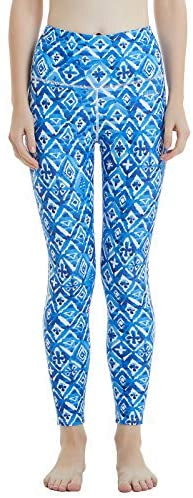
Ubestyle UPF 50+ High Waist Women’s Swimming Tights are a great option for women wanting to keep their legs protected whilst not cutting corners on style. Made from polyester and spandex, these leggings are durable, flexible and breathable. They are suitable for all water – as well as land based – sports, and come in a variety of patterns and colours.
Features
- Material: 82% Polyester, 18% Spandex.
- UPF 50+
- Suitable for all watersports, including on land activities such as yoga.
- Available in a range of colours and patterns.
Rash Guard Guide
Rash guards have a variety of benefits for divers wishing for something a little less cumbersome than a standard wetsuit…
Provides maximum freedom – Rash guards allow for freedom of movement incomparable to any other exposure protection. Diving with a rash guard is like diving naked; just without the awkward stares and embarrassment. Given that the majority of rash guards are composed from a mixture of nylon, spandex, polyester or lycra, they are extremely flexible whilst remaining tight fitting to the skin. These materials also result in them being extremely lightweight; perfect for the traveling diver.
Less weight carried – Unlike a wetsuit, which has inherent positive buoyancy, a rash guard is normally neutral. For those usually burdened with numerous blocks of lead, switching to a rash guard will ease that burden significantly. This is a very liberating feeling, especially for those who have never experienced it.
UV Protection – The majority of good quality rash guards are UPF50+ rated (some even go up to UPF 200+). This is great for divers wanting to escape the bulk of a wetsuit whilst remaining protected from the sun. This carries over to other watersports, such as swimming, surfing or SUP. The added benefit of built-in sun protection is a reduced need to wear sunscreen, which can be harmful to coral reef systems.
Prevent chafing – As the name suggests, rash guards act to prevent rashes and chafing. For divers, this will prevent chafing against the BCD as well as protection against stings from jellyfish. This is perfect for those wanting to stay protected whilst enjoying the freedom of wetsuit-less diving. Similarly, a good rash guard is often more comfortable than a cheap wetsuit with overlock stitching.
What to Look for in a Rash Guard
- Long sleeves – For divers, it is best to get a rash guard that comes with long sleeves. This will provide maximum protection against BCD chafing and jellyfish stings, as well as ensuring that your shoulders and arms are covered from the sun during long surface waits. This will also result in increased insulation if used under a wetsuit.
- UV Protection – Not all rash guards are made equally. When purchasing one, be sure to check that it is rated to at least UPF 50+. This will ensure that it delivers actual sun protection, and is an easy way to tell the good rash guards from the bad.
- Material – Lycra and nylon-spandex rash guards are breathable, flexible and quick drying. Polyester rash guards are also breathable and very durable, but are slightly more limited when it comes to stretch – making for a little less freedom of movement than with lycra or nylon-spandex. However, polyester is still an excellent material for rash guards that will be used for diving. Neoprene is less common for rash guards, usually being the material used for dedicated undervests for wetsuit use. But it is still sometimes used for dedicated rash guards too. Neoprene provides the best insulation and is also tight fitting. It is also very flexible. The drawback of a neoprene rash guard, however, is its increased weight/positive buoyancy as well as its slower drying capability.
- Quick Drying – As a rash guard provides little in the way of thermal insulation, it is essential that it is quick drying if it is to be used for repetitive diving. This means that you won’t have to stomach a soggy rash guard everytime you go for your second or third dive.
- Skin tight – Ideally, a rash guard that will be used for diving should be tight fitting. This will minimise water ingress, allowing it to proffer the little thermal insulation it can. Equally, a tight fitting rash guard is streamlined, making the diver as efficient as possible in the water.